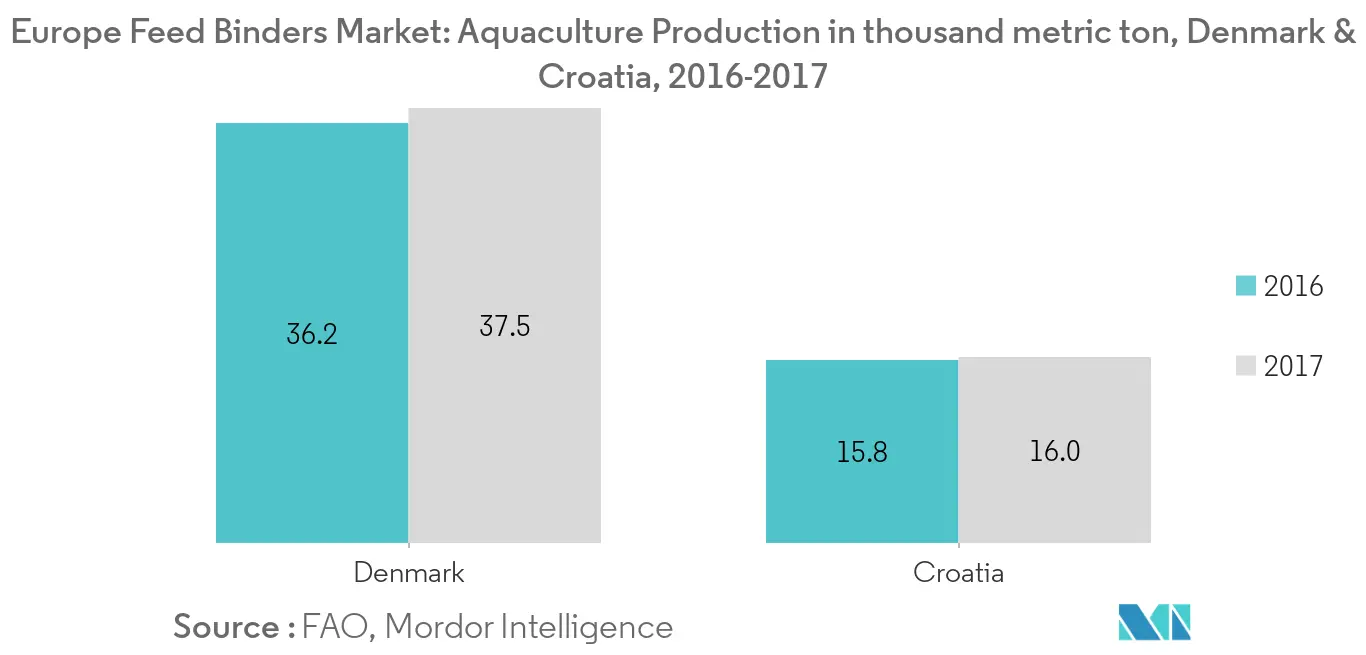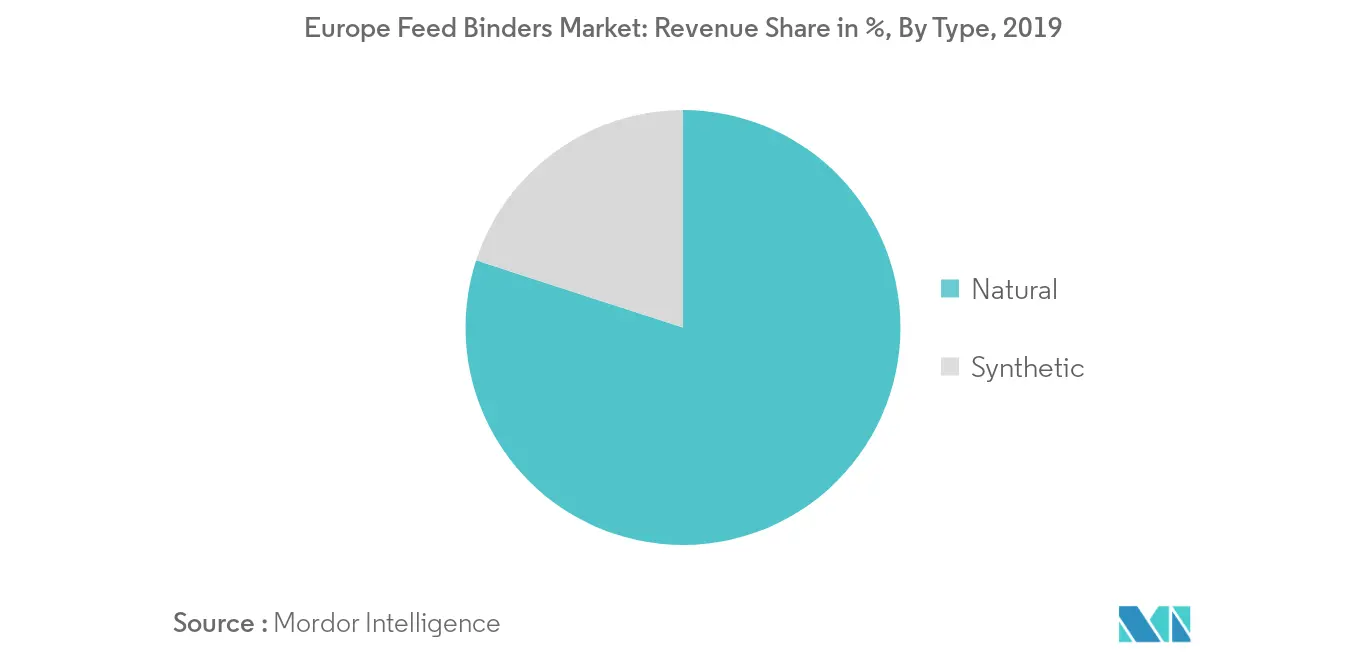Market Trends of Europe Feed Binders Industry
This section covers the major market trends shaping the Europe Feed Binders Market according to our research experts:
Intensifying Fish Farming is Driving the Market
Aquaculture is the most significant segment for feed binders demand in the region, as aquaculture feeds require an adequate level of processing to guarantee good stability in water, long enough for animals to consume it. The aquaculture sector in the region is diverse with the growth of outpacing the growth of other agricultural commodities. In 2017, aquaculture production in the EU was 1.4 million tons. Most of the aquaculture production in the region is concentrated in Spain, France, Italy, the United Kingdom, and Greece. Binder in the aquatic feed pellet is different form livestock feed pellet, the binder in livestock is mainly used to improve the molding rate of pellets, reduce pellet dust and protect the environment, so the livestock feed pellet binder is not of utmost necessity. However, the binder used in aquatic feed pellets is essential for extended scatter time and prevention of nutrients from getting dissolved in the water too quickly. thus, the growth of fish farming and the introduction of new species have led to increased dependency on commercially manufactured compound feed, in turn aiding the growth of feed binders market in the region.

Natural Feed Binders Dominate the Market
There are natural feed binders such as wheat, guar meal, starch, lignin, bentonite clay, gums and others. These natural binders are easily available and most commonly used as opposed to synthetic counterparts such as urea-formaldehyde and polymethylolcarbamide, among others. The natural binders are cheaper than synthetic ones, this may explain the higher market share of these products in the region. However, the rising cost of natural feed binder products such as wheat may cause some shift towards synthetic binders in the forecast period.


